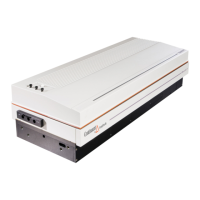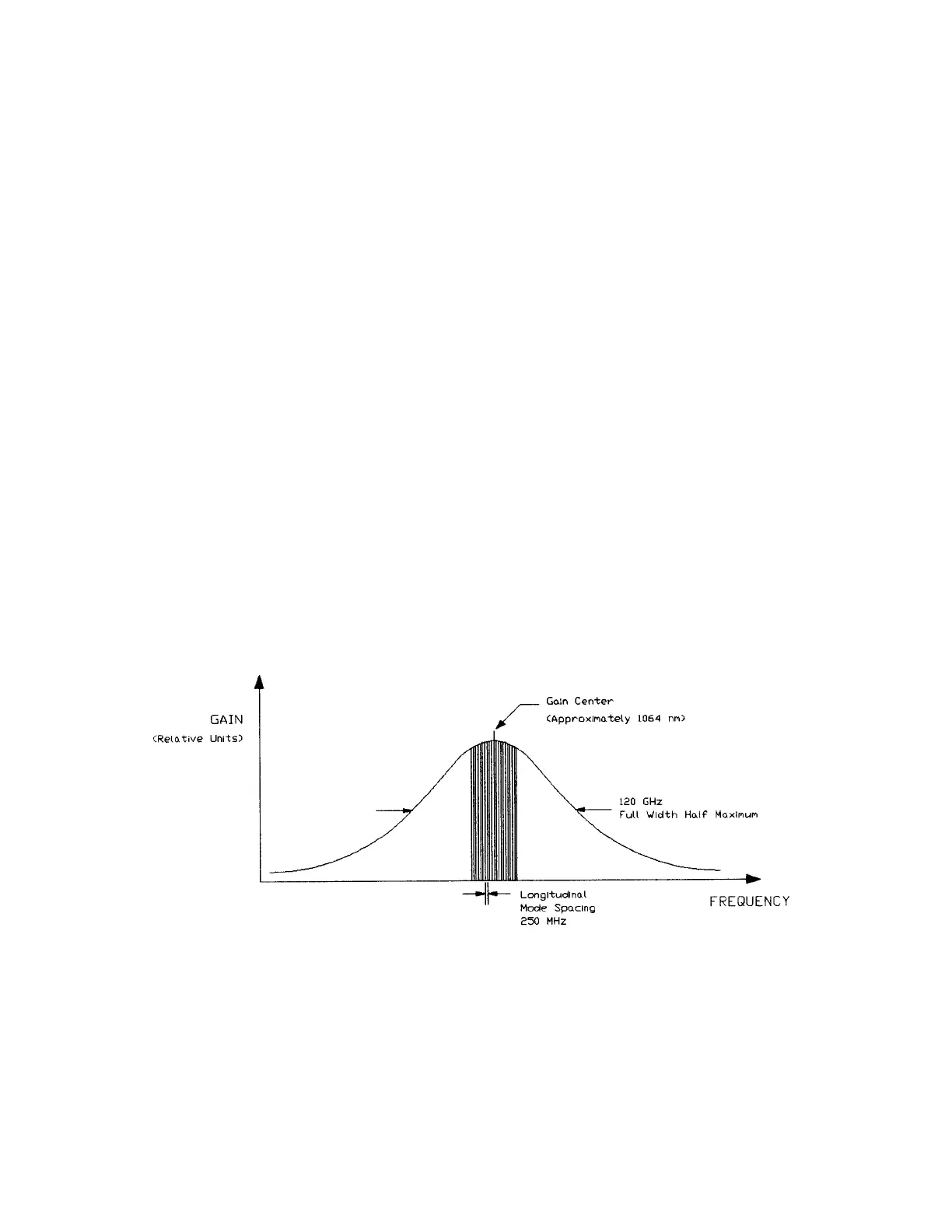2
The high reflecting mirror and output coupling mirror of the host laser form a Fabry-Perot
resonator. The Fabry-Perot cavity supports specific resonant frequencies due to the constructive and
destructive interference of counter-propagating waves within the resonator. The term longitudinal
mode describes a condition where, at any given point along the resonator axis, a wave propagating
between the two cavity mirrors will have exactly the same phase after a full round trip. Clearly
there are many such longitudinal mode frequencies which meet this criteria and the spacing between
longitudinal modes (∆ϖ) is referred to as the "Free Spectral Range" (FSR). The equation which
gives the free spectral range is:
∆ϖ = FSR = c/2nL
where c=speed of light; and n is the index of refraction, and L is the physical path length of the
host resonator.
Assuming most of the cavity is air (n=1), a host laser with a 60 cm resonator length yields:
∆ϖ = 3x10
10
(cm/sec)/2x1x60 (cm) = 250 MHz
Since the gain curve for Nd:YAG is ³120 GHz (or 4 cm
-1
) full-width half-maximum (FWHM),
the Nd:YAG can support a large number of longitudinal modes. However, due to mode
competition, longitudinal modes closest to the center of the gain curve capture most of the available
energy at the expense of longitudinal modes further from the gain center. This generally results in a
normal unseeded linewidth of about 1 cm
-1
for the host laser. This is illustrated in Figure 1-2.
Figure 1-2: Longitudinal Modes of the Host Laser
Laser resonators have transverse ("spatial") modes in addition to longitudinal modes.
Transverse modes, like longitudinal modes, have characteristic frequencies associated with them. It
is imperative for injection seeding purposes that the pulsed Nd:YAG laser run in a single transverse
mode (the lowest order transverse mode, TEM
00
). Furthermore, the resonator should have a strong
discrimination against the lasing of any higher order transverse modes.

